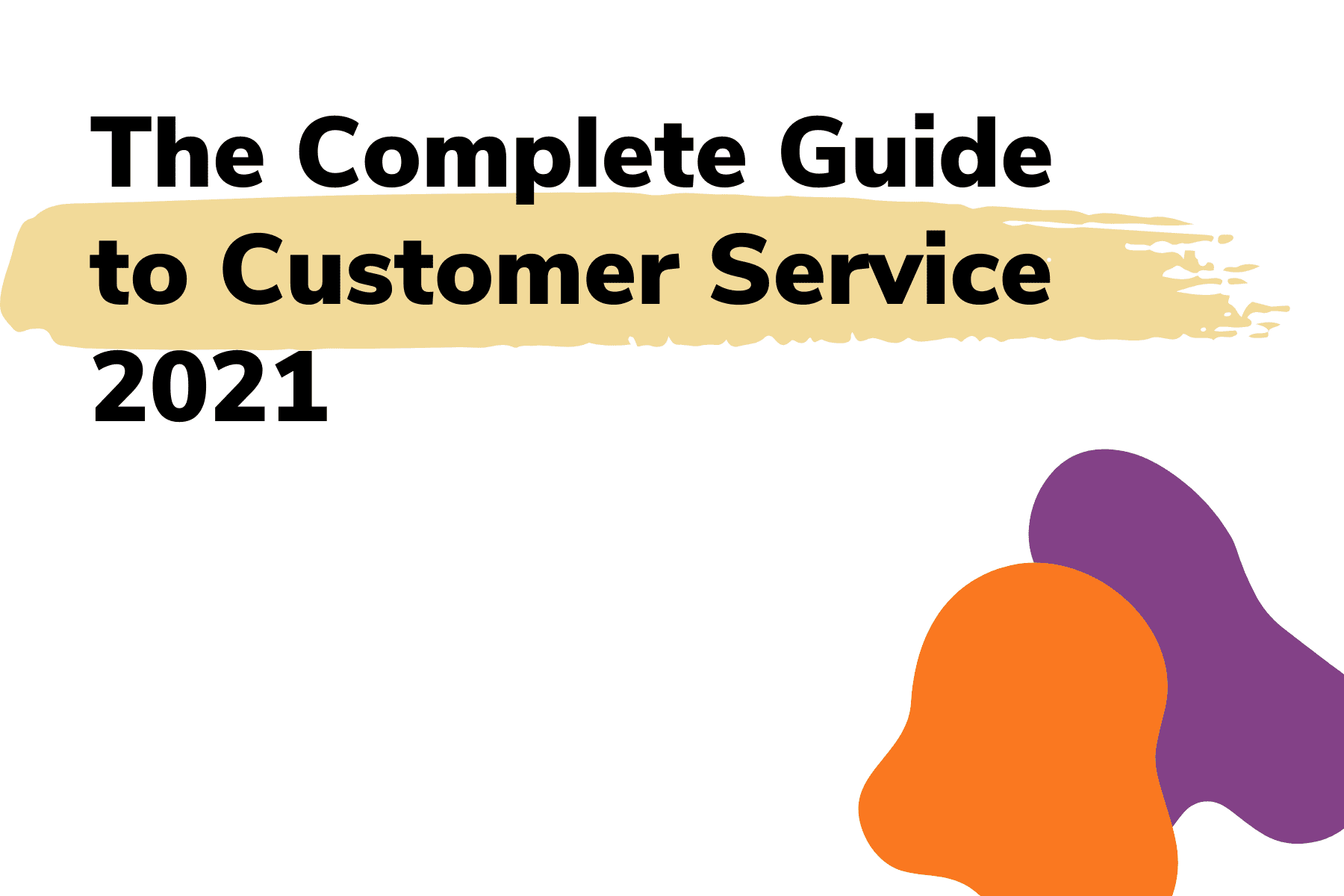Customer service might refer to the name or your team or department. But to customers, the worst "customer service" might remind them of hours wasted waiting on hold, repeating information to representatives, and not getting their problems resolved.
And that's because many customer service teams aren't actually working to serve their customers. Instead, customer service organisations treat cases like numbers, and not like people. Customers are forced to use long forms and complicated phone trees to get the help they need, instead of using the communication channels they prefer.
And worst of all, customers aren't empowered to succeed -- instead, they receive one-off answers to questions, and not the tools to develop a growth strategy.
The dire state of modern customer service is a real shame -- because as it turns out, helping your customers succeed helps your company, too. In fact, in a recent HubSpot Research survey, they found that companies that prioritised customer success were also growing in revenue. And successful companies are happy customers -- and happy customers grow your business faster than sales and marketing by telling friends and family and, eventually, referring new, loyalty customers. And customer happiness starts with customer service.
In this blog we are going to look at:
- What Does Customer Service Mean?
- Types of Customer Service
- Great Examples of Customer Service
- Customer Service Quotes from Leaders
What Does Customer Service Mean?
Simply put, customer service is helping customers solve problems, teaching them how to use products, and answering questions.
The definition is in the name of the concept -- customer service is about serving the needs of customers. And customer service can take many forms -- from troubleshooting a product installation to downloading software to processing a purchase return.
In most customer service interactions, a customer reaches out to a company to make a request, ask a question, or note a complaint, and a customer service representative (or their team) works quickly to offer support, expertise, and help.
The quality of a company's customer service -- good or bad -- can play a huge role in the company's success. Happy customers spend more money and refer their friends and family members to companies that help them succeed -- and dedicated customer service plays a critical role in customer happiness.
On the flip side of the coin, unhappy customers with bad experiences spread the word even further among their network, and could actually cost you customers and impact your reputation, both online and in person.
If you think customer service (or customer support) are at odds with customer success, think again -- building a relationship with customers by providing excellent service is a critical building block of helping customers succeed.
One of the biggest differences? While customer service is typically reactive, customer success is proactive -- wherein customer success managers reach out to work with customers on strategy and goal-setting, compared to customer service representatives responding to individual problems and troubleshooting. But more on that later.
Types of Customer Service
Phone
Many organisations offer customer service primarily through phone interactions. Customers call a hotline, enter a queue, and a customer service representative picks up the phone. Forrester found that phone-based customer service is decreasing in popularity, though -- and that phone service is viewed as an escalation of another channel, such as email or web-based service.
Texts
Twilio surveyed consumers to learn about their messaging habits, and while 90% of respondents said they wanted to use messaging with companies -- via texting on their phones or messaging apps (more on those below) -- only 48% of businesses were equipped to reach customers via messaging. Customers want to connect with businesses for things like order confirmations, reminders, status updates, surveys, and coupons -- and that's partly because people keep messaging app push notifications turned on -- because they're already using the platforms every day.
A lot of customer service is still requested and delivered via email -- where it's still possible to offer a human touch, even over a computer. In fact, Twilio found that email was the second most preferred method of customer service communication for all ages -- which is perhaps a reflection of the time-saving capabilities of submitting requests on your own time, without having to wait on hold.
Zappos is well-known for its commitment to excellent customer service, but this email example might take the cake. It's not replicable for every single customer query imaginable, but the rep is clearly committed to delivering service -- and making the customer happy in the process.
Self-service
Many customers are now turning to DIY customer service methods to get the information they need quickly and easily without having to hop on the phone or wait for an email reply. And in response, businesses are developing knowledge bases, where they publish articles and videos that explain how to use products and services so customers can seek out touchless customer service whenever they need it.
HubSpot Academy's Knowledge Base is full of articles and videos that explain step-by-step processes for using HubSpot software. And for bigger-picture learning and training, HubSpot Academy offers free certifications and trainings to learn about the inbound methodology and specific verticals within the software.
Messaging
Messaging is quickly becoming the most popular way to seek out customer service help -- and this can take many forms, including text-based messaging (discussed above), messaging apps, and direct messaging on social media (more on that below).
Messaging apps boast more than 5 billion users worldwide, and businesses are starting to rely on them to offer quick and easy content distribution and customer service to audiences.
HubSpot uses Facebook Messenger to distribute blog posts like this one, but other businesses are using these apps to make it easier for customers to make purchases and get the help they need -- in apps they're already using to communicate with friends and family.
Social Media
Customer service on social media is another up-and-coming way businesses are communicating with customers more often, and for good reason -- nearly 80% of the consumers we surveyed have shared positive experiences with companies, and 24% recommended companies on social media.
Customers can get fast and easy responses to questions they have on Twitter, Facebook, and Instagram, and social media gives businesses permission to be a little more fun, too. Some brands even create specific accounts for customer support. Yelp Eat24 uses Twitter to offer great customer service -- while still making customers laugh in the process.
Live Chat
Live chat is another option for offering speedy customer service without forcing your customers to wait on the phone -- and it can be operated by humans or robots -- specifically, chatbots.
Live chat widgets can launch on company web pages to offer instant customer support and service -- in another easy way that might be more convenient for your customers. They require full-time dedication to operate successfully, so some businesses turn to chatbots to operate them more affordably -- like CenturyLink did when it employed Conversica's Angie to start communicating with new leads to save time for sales and customer service staff.
Examples of Good Customer Service
For every bad customer service experience you can think of, you might also be able to recall a representative or a business that knocked your socks off by going out of the way to solve problems for you.
And you might think that spending additional time on customer issues won't have a meaningful payoff for you -- but as we've now learned, happy customers bring better results to your business, so it's worth creating a team culture of dedication and extreme helpfulness.
Check out these good customer service examples from a few more big brands -- along with actionable takeaways you can bring back to your team. These businesses are within different industries, but all offer employees a tremendous deal of autonomy and resources to go the extra mile to solve customer problems.
One such example, The Ritz-Carlton Company, gives each of its employees the autonomy to spend up to $2,000 solving customer problems -- without needing to seek approval. And while that whopping amount might be over budget for your organisation, the greater reason why this company has created such a policy bears remembering for every customer service team.
The Ritz-Carlton prizes employee engagement -- because it believes engagement is the key to cultivating employees who are dedicated to improving customer engagement, too. Learn more about its philosophy -- and that of three other leaders in customer service -- in this blog post.
Customer Service Quotes from Leaders
Some of the most well-known business success stories can be credited to great customer service -- at least partly.
After all, attracting new customers with a fantastic product or service is only half of the journey -- a big part of revenue growth is keeping existing customers so they come back and purchase from you again and again.
As it turns out, leaders of big brands like Intuit, Pepsico, and Zappos have a lot of wisdom to offer when it comes to customer service -- and that's because they doubled down on it and made it their mission.
Take Amazon, for example, one of the world's biggest companies whose CEO, Jeff Bezos, has been trying to optimize the customer service experience for a long time by making shopping easier. Bezos advocates for "trying to do hard things well" as the cornerstone for improving brand reputation and establishing a positive brand identity. Now, Amazon is known as the quickest and easiest way to buy things you need -- it's as simple as that.
Read the rest of these customer service quotes to inspire yourself -- and your team -- to give the best service possible, and to see the bigger picture for your business.
Today, customers are in control. Their expectations for service are high, and it's minimally painless and virtually cost-free to switch to your competitors if you aren't meeting them. And the old customer service playbook isn't working. Successful customers can grow your business faster than sales and marketing, but in order to get there, customer service professionals must take on a new, more human approach to service.
Interested in learning more about how we can help you utilise digital technology to provide the best possible customer service?
.png?width=150&height=101&name=HUBGEM%20Logo%20-%20smaller%20logo%20(1000%20x%20673).png)


.png)

%20-%20AEO.png)

%20-%20BreezeContent%20agentstudio.png)